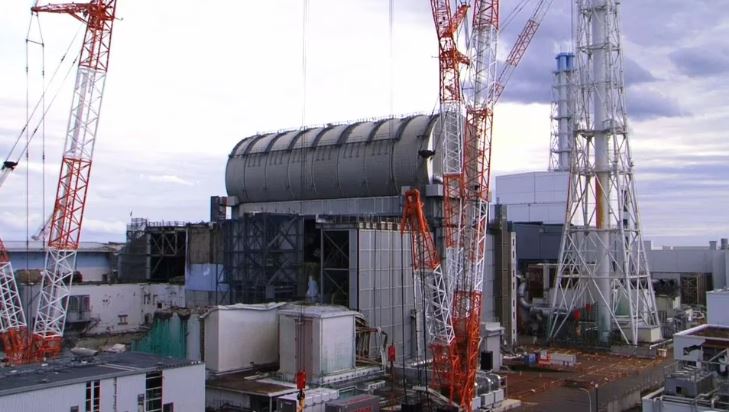The plan was backed by the International Atomic Energy Agency, but the Japanese government will await a UN report before expelling the water.
Japan plans to begin releasing more than a million tons of treated water from the troubled Fukushima nuclear plant into the sea this year, a government source said Friday.
The plan was backed by the International Atomic Energy Agency (IAEA), but the Japanese government will await “a comprehensive report” from the UN before expelling the water, Cabinet Secretary Hirokazu Matsuno told a group of journalists.
The plant’s cooling systems were overwhelmed in 2011 when a powerful underwater earthquake triggered a tsunami that caused the worst nuclear accident since Chernobyl.
The site generated 100 cubic meters of contaminated water per day between April and November last year, a combination of groundwater, seawater and rainwater that mixed with cooling water.
The liquid is filtered to eliminate radionuclides and transferred to storage tanks, which already hold more than 1.3 million cubic meters and space is running out.
“We expect the release to take place sometime between spring and summer, after the release facilities are completed and tested and the full IAEA report is published,” Matsuno said.
This measure extends the initial plan of the Tokyo Power Electric Company (Tepco), which aimed to begin the work of expelling water in the spring of this year, after filtering it with the intention of diluting it in salt water and throwing it into the sea.
“We recognize that the Government has given a range from spring to summer after exhaustively considering various processes. We will continue to target spring to complete construction and create a system that can operate firmly,” Tepco President Tomoaki Kobayakawa explained.
The Japanese authorities explained that there are “efforts to promote understanding” with local residents, since this decision raised criticism, especially among fishermen in the region for the possible impact on their economies.
Tomoaki considered that the local community needs “detailed and careful explanations” as they “face various concerns” due to “lack of understanding.”
Despite the precautions, fishermen in the region fear the release of the water will tarnish the reputation of their product, after they have spent years restoring its credibility through rigorous testing.
The company that operates the plant ensures that the treated water meets national parameters for radionuclide levels, with the exception of one element, tritium, which experts say is only harmful to humans on a large scale.
The plan is to dilute the water to reduce tritium levels and release it into the sea over several decades through a kilometer-long underwater pipeline.
The IAEA assured that the release complies with international parameters and “will not cause any harm to the environment.”
Neighboring countries such as China and South Korea, as well as Greenpeace and other organizations, criticized the plan.
The March 2011 disaster in northeast Japan left some 18,500 people dead or missing, mostly victims of the tsunami.
Despite the fact that the plant’s security system responded adequately after the earthquake, contrary to what happened in Chernobyl in 1986, waves about fifteen meters high hit the plant and caused flooding that led to three nuclear meltdowns and the release of large amounts of radioactive contamination.

